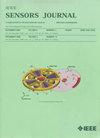基于lp范数平滑的MIMO雷达低SPSL发射波束设计
IF 4.3
2区 综合性期刊
Q1 ENGINEERING, ELECTRICAL & ELECTRONIC
引用次数: 0
摘要
在发射波束方向图设计中,低空间自相关峰值旁瓣电平(SPSL)是合成波形防止弱目标被强散射点掩蔽的必要条件。本文提出了一种有效的低SPSL发射波束图设计方案。首先,我们建立了合成波形的SPSL模型。其次,我们建立了一个以最小化合成波形的SPSL和控制发射波束方向为目标的优化问题,得到了一个非凸、非光滑的最小-最大问题。为了解决这个问题,我们使用${L}_{p}$ -范数的多数化模型将其转化为一个四阶多项式优化问题。随后,我们引入一个辅助变量,将四阶多项式优化问题转化为二次多项式优化问题。数值结果表明了该方法在实现低SPSL (TB-SPSL)发射波束方向图方面的有效性。本文章由计算机程序翻译,如有差异,请以英文原文为准。
Low SPSL Transmit Beampattern Design for MIMO Radar via Lp-Norm Smoothing
For transmit beampattern design, low spatial autocorrelation peak sidelobe level (SPSL) is essential for synthetic waveforms to prevent the masking of weak targets by strong scattering points. In this article, an effective low SPSL transmit beampattern design scheme is proposed. First, we formulate the SPSL model for the synthetic waveform. Second, we establish an optimization problem aimed at minimizing the SPSL of synthetic waveforms and controlling the transmit beampattern, resulting in a nonconvex, nonsmooth min-max problem. To address this issue, we transform it into a fourth-order polynomial optimization problem using the majorization model of the ${L}_{p}$ -norm. Subsequently, we introduce an auxiliary variable to convert the fourth-order polynomial optimization problem into a quadratic polynomial optimization problem. Numerical results demonstrate the effectiveness of the proposed scheme in achieving transmit beampattern with low SPSL (TB-SPSL).
求助全文
通过发布文献求助,成功后即可免费获取论文全文。
去求助
来源期刊

IEEE Sensors Journal
工程技术-工程:电子与电气
CiteScore
7.70
自引率
14.00%
发文量
2058
审稿时长
5.2 months
期刊介绍:
The fields of interest of the IEEE Sensors Journal are the theory, design , fabrication, manufacturing and applications of devices for sensing and transducing physical, chemical and biological phenomena, with emphasis on the electronics and physics aspect of sensors and integrated sensors-actuators. IEEE Sensors Journal deals with the following:
-Sensor Phenomenology, Modelling, and Evaluation
-Sensor Materials, Processing, and Fabrication
-Chemical and Gas Sensors
-Microfluidics and Biosensors
-Optical Sensors
-Physical Sensors: Temperature, Mechanical, Magnetic, and others
-Acoustic and Ultrasonic Sensors
-Sensor Packaging
-Sensor Networks
-Sensor Applications
-Sensor Systems: Signals, Processing, and Interfaces
-Actuators and Sensor Power Systems
-Sensor Signal Processing for high precision and stability (amplification, filtering, linearization, modulation/demodulation) and under harsh conditions (EMC, radiation, humidity, temperature); energy consumption/harvesting
-Sensor Data Processing (soft computing with sensor data, e.g., pattern recognition, machine learning, evolutionary computation; sensor data fusion, processing of wave e.g., electromagnetic and acoustic; and non-wave, e.g., chemical, gravity, particle, thermal, radiative and non-radiative sensor data, detection, estimation and classification based on sensor data)
-Sensors in Industrial Practice
 求助内容:
求助内容: 应助结果提醒方式:
应助结果提醒方式:


